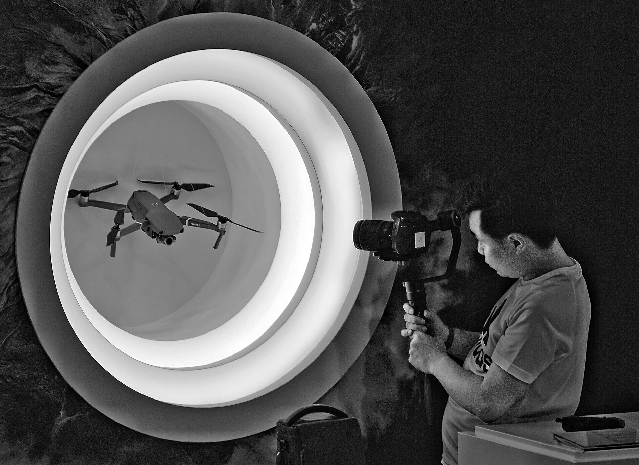
IN Shenzhen’s glitzy financial district, a five-year-old outfit creates a 360-degree sports camera that goes on to win awards and draw comparisons to GoPro Inc. Elsewhere in the Pearl River Delta, a niche design house is competing with the world’s best headphone makers. And in Beijing, a little-known startup becomes one of the biggest purveyors of smartwatches on the planet. Insta360, SIVGA and Huami join drone maker DJI Technology Co. among a wave of startups that are dismantling the decades-old image of China as a clone factory. Within the world’s No. 2 economy, Donald Trump’s campaign to contain China’s rise is in fact spurring its tech sector to accelerate design and invention. By bringing design expertise and innovation to the places where devices are manufactured, these companies are able to develop products faster and more cheaply. “Ninety percent of the world’s headphones are produced in China, 90 percent of China’s headphones are produced in Guangdong, and 90 percent of Guangdong’s headphones are made in Dongguan,” said SIVGA co-founder and product chief Zhou Jian, an 18-year audio industry veteran who has done work for global brands like Sennheiser Electronic GmbH & Co., Sony and Bose. His company is based in Dongguan because, he said, “Dongguan’s industrial chain is near perfect.” Zhou estimates there are hundreds of specialist factories in the area focusing on a particular component, such as screws, and his network of contacts among those suppliers has been invaluable. It was “support from these good friends” that got SIVGA, short for Sound Impression Via Genuine Artwork, off the ground. Now employing more than 30 people and offering a premium brand called Sendy Audio, SIVGA sells a luxury pair of US$599 headphones called Aiva. Featuring handcrafted wooden ear cups and intricately detailed metal grilles, the Aiva headphones have shipped more than 2,000 units into a niche, high-margin market that’s usually reserved for U.S. boutique outfits like Audeze and Campfire Audio. “As far as we know, we are the only company in Dongguan with a woodworking department,” Zhou said, while also pointing out that at SIVGA “the development time is short and many decisions can be made on the spot.” This instant design responsiveness is a signature feature of China’s new tech upstarts, and Zhou sums it up with an old Chinese proverb: “small boats change course easier than big boats.” DJI Technology is the pioneer that proved Chinese tech companies could aspire to be more than just manufacturing contractors or fast copiers. “DJI leads the industry with features like automatically avoiding obstacles in flight, which it implemented first,” said Techsponential lead analyst Avi Greengart. “Rivals in the United States and France have not been able to catch up.” DJI’s lead is based on the same geographic synergies as SIVGA’s. When a U.S. rival suffers a manufacturing hitch or defect, its ability to identify and react to the problem is hampered by the distance between its designers and manufacturers. DJI doesn’t have that problem, which has helped propel it to being the top drone maker in the world. “These are Chinese companies that want to be industry leaders and innovators. DJI and Insta360 are perfect examples of that movement,” said Anshel Sag, mobile industry analyst for Moor Insights & Strategy. “A big part of it comes from the entrepreneurial spirit of Shenzhen.” Like Dongguan, which this year saw a large new Huawei Technologies Co. campus open, Shenzhen is a nexus of component makers and suppliers eager to find new customers for their wares. The cacophonous Huaqiangbei bazaar in the city exhibits a wild array of gadgets from smartphone-electric shaver hybrids to neon-lit unicycles with Bluetooth speakers. That commoditized fray offers inspiration but also an impetus to rise above it with genuine innovation. The successful companies are the ones who make the most of the rabid production and iteration around them. “In Shenzhen, there’s a well-established supply chain system,” said Insta360 founder Liu Jingkang. “From a research perspective, in-house R&D may only contribute 60 percent of a product, the rest needs to be finished in factories.”(SD-Agencies) | 
